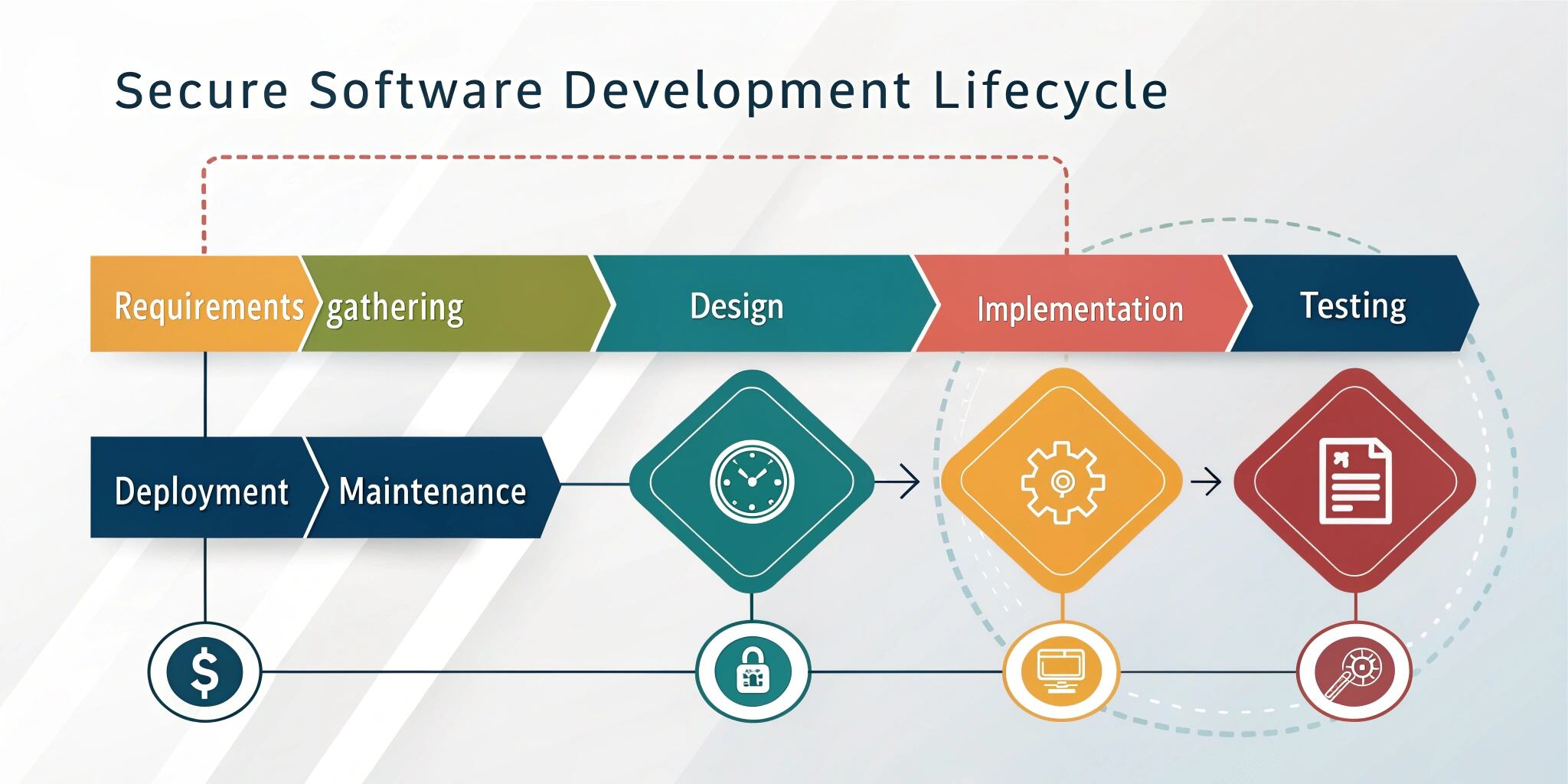In today’s digital-first world, software vulnerabilities can cost businesses millions and damage reputations. Traditional software development often treats security as an afterthought. The Secure Software Development Lifecycle (SSDLC) flips this approach—embedding security into every phase of the development process.
What is SSDLC?
SSDLC stands for Secure Software Development Lifecycle. It’s a framework that combines the standard Software Development Lifecycle (SDLC) with built-in security practices. The goal is to prevent security issues before they become costly problems.
Why SSDLC Matters:
- Early detection of vulnerabilities
- Reduced remediation costs
- Improved regulatory compliance
- Increased user trust and software integrity
- Better collaboration between developers and security teams
Phases of the Secure Software Development Lifecycle (SSDLC):
1. Requirements Gathering
- Identify security requirements alongside functional requirements.
- Define compliance needs (e.g., GDPR, HIPAA, ISO).
- Best Practice: Perform security risk assessments early.
2. Design
- Conduct threat modeling to identify potential vulnerabilities.
- Choose secure architecture and design patterns.
- Tools: Microsoft Threat Modeling Tool, OWASP Threat Dragon
3. Development
- Implement secure coding practices (e.g., input validation, proper authentication).
- Use static code analysis tools to catch bugs early.
- Tip: Follow the OWASP Secure Coding Guidelines.
4. Testing
- Perform security testing including:
- Static Application Security Testing (SAST)
- Dynamic Application Security Testing (DAST)
- Penetration Testing
- Ensure code passes both functional and security QA.
- Tools: Veracode, SonarQube, Burp Suite
5. Deployment
- Ensure secure configuration of servers and APIs.
- Automate deployment with security checks using CI/CD pipelines.Best Practice: Integrate DevSecOps practices into deployment.
6. Maintenance and Monitoring
- Regularly patch and update software.
- Monitor applications for suspicious activity or vulnerabilities.
- Conduct periodic security audits.
- Tip: Use SIEM tools like Splunk or QRadar to detect anomalies.
Benefits of Adopting SSDLC:
- Reduces attack surface by identifying vulnerabilities early.
- Promotes a security-first culture within development teams.
- Improves incident response readiness.
- Lowers cost and time associated with fixing bugs in production.
SSDLC vs Traditional SDLC
FeatureSDLCSSDLCFocusFunctionalityFunctionality + SecuritySecurity TestingAt the endThroughoutCost of Fixing BugsHigh (late detection)Low (early detection)ComplianceAfterthoughtBuilt-in
Conclusion:
Security can no longer be a “final step” in the development process. The Secure Software Development Lifecycle (SSDLC) ensures security is considered at every stage—from planning to post-deployment. By adopting SSDLC, organizations build not just software—but secure software—by design.


